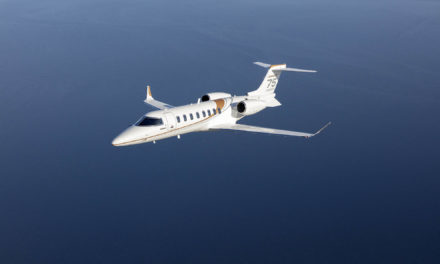GAMA 2018 report
Every year the General Aviation Manufacturers Association (GAMA) publishes a report with statistics that describe the state of the general aviation industry worldwide, including business aviation. GAMA is an international trade association representing more than 100 of the world’s leading manufacturers of general aviation aeroplanes and rotorcraft, engines, avionics, components and related services. The 2018 Annual Report covers detailed data of aircraft shipments from 39 manufacturers. Overall, in 2018 the GA aircraft manufacturing industry increased unit deliveries compared to the year before with billings that increased to approximately $24.2 billion.
The aircraft categories included in the GAMA annual report that are of particular interest to international business aviation are turboprops and business jets. Manufacturers shipped 601 turboprop aeroplanes. The business jet industry improved from 677 units in 2017 to 703 units in 2018. We will review the GAMA 2018 report focussing on turboprop and business jet shipments, estimated billings, deliveries by region and the relative balance of deliveries among the business jet manufacturers.
Shipments
Indeed, the evolving balance between turboprop and business jet shipments is something that particularly strikes the eye. The report provides data from 1995 to 2018, thereby allowing a comparison of performance over these several years. According to the data, shipments of turboprops reached the maximum level in absolute terms in 2013 with 645 shipments, while business jets reached their maximum level in 2008 with 1,317 shipments as shown in Figure 1. A comparison between turboprop and business jet shipments highlights that the two categories followed the same trend until 2010. In 1995 shipments of turboprops were 285 whereas those of business jets were 300. From 1995 to 2001, the two aircraft’s categories shipments face an increase, reaching the values of 422 for turboprops and 784 for business jets with the latter aircraft category’ shipments having a higher increase compared to turboprops. From 2001 to 2003 shipments suffered a decrease, to increase again from 2003 to 2008. This second increase was particularly remarkable for business jets, which in in 2008 reached its highest ever number of shipments. From 2010 to 2016 the turboprop and business jet shipment trends went in opposite directions. In particular, from 2010 to 2013 business jet shipments decreased while turboprop increased, with the latter category reaching its highest ever number of shipments in 2013. From 2014 to 2016 business jet shipments increased while turboprop decreased. From 2016 to 2018 both aircraft categories had increased deliveries, even if at a relatively low rate. Indeed, as Figure 1 shows, the significantly higher number of shipments of business jets compared with turboprops that characterised the late 90s and early 2000s simply is not there anymore as a substantial convergence in terms of shipped units is being experienced.
Estimated billings
The estimated billings (in USD millions)
for the two aircraft categories’ shipments are directly proportional to the
shipments, i.e. to increased shipments correspond increased billings. While the
balance between turboprop and business jet shipments is characterised by
convergence, the estimated billings related to these two aircraft categories
are characterised by a widening divide. This is very clear by looking at the
estimated average billing change from 1995 to 2018. Figure 2 shows
that the average for turboprops is relatively constant while the average for business
jets is characterised by remarkable growth, in particular after 2008. The
estimated business jet average billing reached its highest value in 2013 at 31
(USD millions); while in 2018 the average business jet billing decreased to 25
(USD millions), there has been nevertheless a significant growth compared with
1995 [when the average billing was 11 (USD millions)]. The data confirm the
current industry consensus whereby shipments from the manufacturers are mainly
for business jets in the higher end categories.
Delivery region
Data on customer delivery regions (see Figure 3) show
that the percentage of shipments of turboprops in regions of the world other
than North America and Europe is on the rise, i.e. there are relatively less
turboprops being delivered in North America and Europe, while relatively more
are being delivered in the Asia Pacific region, Latin America and the Middle
East and Africa.
With regard to business jets (Figure 4), the first thing that should be noted is that their percentage of shipments in North America and Europe versus the rest of the world has remained constant, i.e. 70-80% of business jets continue to be delivered to North America and Europe (the same as 10-12 years ago).
The relative balance of deliveries between North America and
Europe deserves some additional consideration. As Figure 5
shows, while the percentage of deliveries in North America dropped
significantly from 2007 to 2010, since 2010 the percentage has grown very healthily,
and it now exceeds the levels of 2007. The percentage of deliveries in Europe
remained relatively constant from 2007 and 2010, but since 2010 it has decreased
quite markedly and it is now significantly below the levels of 2007. The
changing balance of deliveries between North America and Europe is possibly an
indicator of the better ability of the North American economy to overcome the
2008 financial crisis as compared to the European economy.
Manufacturers
As Figure 6
shows, the top five business jet manufacturers in terms of deliveries are
Textron Aviation (Cessna Aircraft) (27%), Bombardier Business Aircraft (19%),
Gulfstream Aerospace Corporation (17%), Embraer (13%) and Cirrus Aircraft (9%).
Data on business jet shipments by manufacturer from 2005 to
2018 [see Figure 8 and Figure 7 which
exclude data on Avcraft (prev. Fairchild) and Emivest (prev. Sino Swearingen)]
reveal some distinctive developments. The first thing that emerges is that new
business jet manufacturers have begun aircraft deliveries over the last three
years. The new manufacturers include Cirrus, Honda Aircraft Company and Pilatus
and their overall deliveries account for approximately 17% of all 2018
deliveries (see Figure 6).
This is the first time since 2005 that new manufacturers account for such a
sizeable share of overall business jet deliveries, the last time was in 2008
when Eclipse had a 12% share of overall deliveries.
Another aspect that emerges from Figure 7 is that Textron Aviation (Cessna Aircraft) had a relatively constant percentage of deliveries from 2005 to 2009. This percentage dropped quite significantly from 2010 to 2013 and it started to rise constantly again from 2014 onwards. In 2018 Textron Aviation (Cessna Aircraft) was the number one business jet manufacturer with 188 delivered units (27%). According to a Textron Aviation press release, the company’s deliveries included 57 Cessna Citation Latitude aircraft, thereby winning the midsize segment for the third consecutive year and outselling its closest competitor four to one. “Leading business jet deliveries in 2018 is a continued testament to the trust our valued customers place in the Citation family” said Rob Scholl, Textron Aviation, senior vice president, Sales and Marketing. “We’re honoured to see that customers and operators have responded by making the Latitude their midsize platform of choice for three years running”.
For what concerns Bombardier Business Aircraft, the manufacturer’s deliveries have oscillated between around 20 to 30% of total business jet deliveries since 2005 and in 2018 Bombardier captured 19% of business jet deliveries. According to a company press release, Bombardier achieved 58% of the super mid-size segment by delivering 60 Challenger 350 aircraft in 2018. “This is the second consecutive year that our best-selling Challenger 350 business jet has led the pack in the super mid-size segment and in business jet deliveries worldwide across all segments” says Peter Likoray, Bombardier Business Aircraft, Senior Vice President, Worldwide Sales and Marketing. “With its unmatched reliability and economics, unrivalled cabin comfort and ultra-smooth ride, this aircraft offers customers an unbeatable value proposition. As business jet shipments show continued strength, we are confident that the Challenger 350 business jet will remain the leading choice of knowledgeable and experienced operators across the globe”.
The Challenger 350 was the most delivered business jet in 2018. Bombardier also delivered 23 of its large-segment Challenger 650 business jets in 2018, and the first in a much-anticipated string of Global 7500 business jet deliveries expected to follow in 2019.
Embraer, with 13% of 2018 business jet deliveries, has increased its market share significantly since 2008 (see Figure 6). Whereas before 2009 its percentage of deliveries was around 3%, in 2009 the percentage of Embraer deliveries versus total deliveries jumped and has remained well above 10% ever since. Embraer delivered 53 Phenom 300 and Phenom 300E light jets in 2018. This is the seventh consecutive year that the Phenom 300 achieves this mark, having accrued more than 490 deliveries since entering the market in December 2009, according to an Embraer press release. “The Phenom 300’s continued success in the market is a reflection of our commitment to fascinate customers and deliver the ultimate customer experience in business aviation,” said Michael Amalfitano, Embraer Executive Jets, President & CEO. “The revolutionary interior design of the Phenom 300E adds even more value to this already popular model, reaffirming our commitment to continue to invest in true innovation.”
Summing up
The GAMA 2018 annual report presents a business aviation industry with increasing deliveries compared to 2017 and a convergence between the number of turboprop and business jet units being delivered. With regard to business jets the preference is for aircraft that are in the higher end categories. Moreover, new business jet manufacturers have developed some critical mass. The overall industry, however, is still far from its highest ever peak of business aircraft deliveries recorded in 2007 and 2008.









